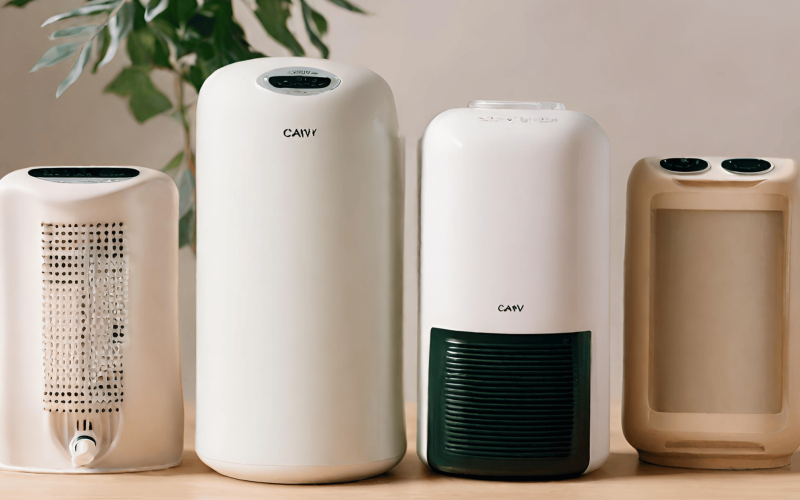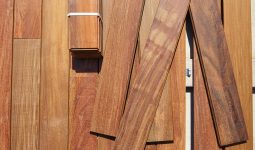Do you know which type of purifier is best for your needs? With so many options available, it can be overwhelming to choose the right one.
From air to water, there are different types of purifiers to consider.
In today’s world, pollution is a major concern, affecting the air and water quality. As a result, the demand for purifiers has increased significantly.
However, not all purifiers are equal; each type has unique features and benefits.
Understanding the different types of cleaners is essential to making an informed decision.
It doesn’t matter if you want to improve the air quality in your home or ensure that your drinking water is safe.
This article will explore the various types of cleaners available and help you choose the one that best suits your needs.
What are Purifiers?
Purifiers, from the name, can easily be understood as something that cleans.
While you may quickly think so, its concept is a bit different. Purifiers are devices that help us improve the air quality we breathe.
It’s very normal how they do this because they’re not noisy devices.
They quietly fight against dust, allergens, and pollutants. Imagine them as the guardians of your home, tirelessly ensuring that the air you inhale is as fresh as a morning breeze.
These remarkable gadgets come in various shapes and sizes, but their mission remains to create a haven of pure, clean air for you to enjoy.
They utilize technologies, from HEPA filters to ionizers, to zap away impurities.
Think of them as your trusty sidekicks for a healthier and more comfortable living environment.
So, if you want to breathe easy and live in harmony with your surroundings, a purifier is your best friend in achieving that!
Different Types of Purifiers
1. HEPA Air Purifiers
High-efficiency Particulate Air (HEPA) technology has been used for many years to filter particles and other contaminants from the air.
The standard for HEPA filters is that they must be able to trap at least 99.97% of all particles larger than 0.3 microns.
Since the human eye can only see particles larger than 10 microns, anything caught in a HEPA filter, such as bacteria, chemicals, and viruses, remains unseen.
This makes a HEPA-filtered environment more sanitary and safer than one without one.
It also offers peace of mind since it does not generate ozone or other harmful byproducts.
However, the construction of a HEPA filter is quite complex.
This type of air purifier starts with a very fine fiber-like material that has been folded back and forth into an accordion shape.
The folds help trap contaminants while still allowing air to flow through.
Further, because the fibers are layered many times, it creates multiple filtration levels, increasing the device’s efficiency in filtering contaminants from the air you breathe.
Thus, owning and using a HEPA filter ensures cleaner air containing fewer allergens!
2. Activated Carbon Filters
Activated carbon technology is among the different types of purifiers.
It’s a powerful air and water purification tool, recognized since the early twentieth century.
It is highly porous and has a tremendous surface area, allowing it to absorb and trap pollutants, including chemical emissions, gases, odors, and even tobacco smoke.
Activated carbon filters comprise micro-porous molecules that can latch onto these particles to prevent them from recontaminating the air.
During World War One, activated carbon was used in gas masks and wartime air and water filtration devices to protect soldiers from potential hazards.
This technology continues to be incredibly important for treating waste streams in many industries today and for residential use.
Industrial-grade activated carbon has proven effective in removing dangerous contaminants from wastewater produced by factories making chemicals or manufacturing pharmaceuticals.
Even for domestic households, charcoal filters are available in various HVAC systems as an additional filtration system to reduce the amount of dust allergens or odors coming through air vents.
In all forms, this effective filter helps make our environment healthier by constantly trapping hazardous particles before they reach us.
3. Ionizers
Ionizers are an advanced air purification technology that uses ions to attract air pollutants.
These ionic particles create a magnetic attraction that pulls in the contaminants and carries them down to the floor as they become heavier.
This helps to reduce airborne allergens, bacteria, dust mites, pollen, viruses, and even odors from smoke or cooking.
However, this process may not be as efficient as other purification methods.
That’s because of the ground contamination created by all the heavy pollutant particles that settle into flooring and other surfaces.
Moreover, since these pollutants are not disposed of after getting attracted to the ions, there is some chance of recontamination over time.
There are many advantages of using ionizers for air purification, such as its ability to remove contaminants from air much more quickly than other methods.
It also prevents allergens from circulating throughout a home while providing users with a cleaner environment.
Unfortunately, there is no way to dispose of this trapped matter.
So, you must take whatever is within the negative ion outside and dispose of it appropriately manually.
Nevertheless, Ionizers remain a viable option for those who want quick results without using harsh chemicals or extensive maintenance on their air filters regularly.
4. UV-C Purifiers
Among the different types of purifiers are UV-C purifiers. UV technology is an effective way to eliminate germs and microorganisms from the air.
When using UV light, the organisms are exposed to radiation that causes cellular or genetic damage, rendering them harmless.
This form of air purification often works with particulate filters that don’t remove particles from the air but instead keep them in suspension until a filter can remove them.
The UV rays released by these lamps can also transform oxygen and water molecules into ozone and hydroxyl.
Ozone, while helping break down pollutants, can be harmful if too much is in the atmosphere.
However, a good UV air purifier should minimize this risk as much as possible while providing the necessary cleaning power.
5. Central Air Cleaners
Central air cleaners are a great solution for people with allergies, asthma, and other airborne illnesses.
They are installed in your home’s ductwork and provide superior air filtration throughout the entire house.
Using advanced technology, these systems can remove up to 99% of dust and pollen particles, 98% of dust mite allergens, and 94% of viruses.
All these greatly reduce the threat such airborne contaminants pose to your health.
The installation process is fairly simple, and people often do it in a single day, depending on your home’s ductwork layout.
After installation, you won’t even notice it’s there since the central air cleaner works silently without taking up any space.
The best part? You won’t have to worry about changing or replacing filters like similar products because many central air cleaners come with permanent filtration systems that trap debris over time without needing replacement parts.
This makes them extremely cost-efficient and an easy choice for an allergen-free home.
6. Electronic Air Purifiers
An electronic air cleaner is another effective whole-home solution for indoor air quality.
This device works with your furnace or air conditioner to charge and trap airborne particles using static electricity.
It utilizes a HEPA filter with the HVAC system to purify the air in your home, trapping particles as small as .3 microns.
The HEPA filter can eliminate up to 99.98% of allergens from the air, and positively charged ions generated by the electronic air cleaner combat any remaining impurities.
An electronic air cleaner is notably more comprehensive and efficient in design than other purification methods.
Rather than relying on physical filters alone, it combines them with electrical charges that magnetically draw any impurities they come into contact with directly out of the air and into a collection container to be removed at intervals courtesy of regular maintenance checks on the device itself.
7. Air-to-Air Exchangers
Last but not least, air-to-air exchangers are among the different types of purifiers.
Air-to-air exchangers effectively ventilate the air in your home by replacing it with fresh air.
This helps remove any stale and polluted air that has built up inside, helping to create a more comfortable environment.
An energy recovery ventilator further increases the benefits of an air-to-air exchanger by using heat or cooling from the existing air to adjust the temperature and humidity of incoming fresh air.
This helps maintain a more even temperature throughout your home while ensuring enough fresh air enters your property.
In the winter, energy recovery ventilators trap warm air before expelling it outside your home and use this heat to warm and humidify clean air into your property.
In summer, they perform similarly but use cool, dry outside air to cool and dehumidify the incoming fresh supply before introducing it into your house.
With these systems, you can enjoy both clean and fresh at all times and ensure optimum humidity levels during different parts of the year.
Conclusion
Different types of purifiers are available on the market, each with unique features and benefits.
Whether you want to improve the air quality in your home, office, or car, a purifier can meet your needs.
However, before deciding, you must consider factors such as the space size you need to purify and the specific contaminants you target.
You can decide right by understanding the different types of cleaners and their capabilities!








